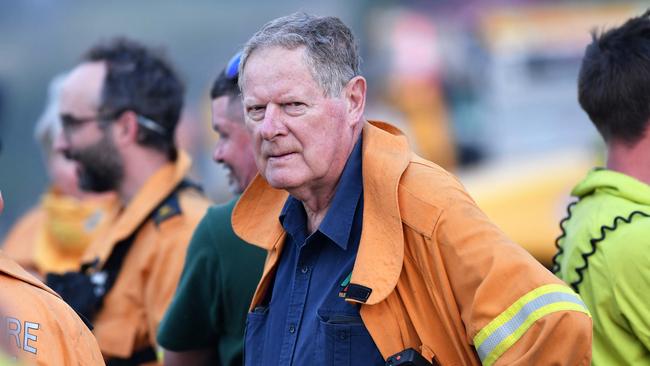Australia’s bushfire season 2024: current fire bans and safety advice
Australia has a sorry history with bushfires - so how do you prepare for every scenario? EVERYTHING YOU NEED TO KNOW
Emergency Services
Don't miss out on the headlines from Emergency Services. Followed categories will be added to My News.
Australia has a sorry history with bushfires - so how do you prepare for every scenario?
From how to spot fires to getting your safety kits ready, this is everything you need to know about bushfire season.
All your questions answered >>>
When will bushfire season start?
Bushfires in the south-east and south-west of Australia are strongly associated with summer, whereas in northern Australia, the fire season is associated with the dry winter period. Each year, the bushfire season shifts from the north of the country to the south and starts again in the north each autumn. However, scientific research indicates climate change is making fire seasons longer each year (CSIRO and BOM 2020).
Queensland Fire and Emergency Services states: “Fire season in Queensland often begins in July and runs through until October, and can extend through to February.”
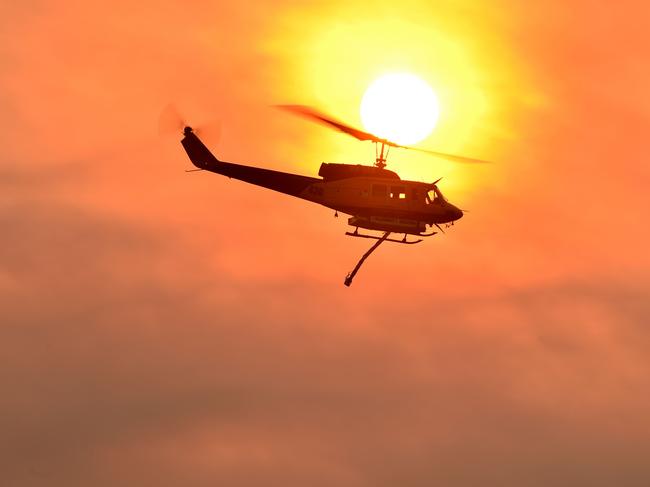
In NSW the statutory Bush Fire Danger Period runs from 1 October to 31 March, however it may vary due to local conditions.
If you are planning to light a fire in the open during this time, you will need a Fire Permit.
See the map of current fire bans and restirctions in Queensland here.
Source: Yourhome.gov.au, NSW Rural Fire Service
Current fire bans Qld 2024 and fires near me
According to fire.qld.gov.au: “In Queensland, the use of fire can be restricted by imposing either a Local Fire Ban or a State of Fire Emergency. When predicted conditions and weather forecasts indicate that fires may be difficult to control and pose danger to communities, the Commissioner of the Queensland Fire Department or their delegate has the authority under the provisions of the Fire Services Act 1990 to impose a local fire ban.”
See the list below >>>
How can I prepare for bushfire season?
Maintenance is crucially important to the integrity of the building as well as your survival. Check and prepare your home every year before the fire season. Your checks and maintenance should include:
■ checking the exterior of your home for damage and gaps – check tiles and roof lines for broken tiles or dislodged roofing materials – check that screens on windows and doors are in good condition without breaks or holes and frames are well fitted into sills – check external wall surfaces for decaying timbers ensuring there are no gaps where embers can lodge – check doors are fitted with draught seals that are in good condition.
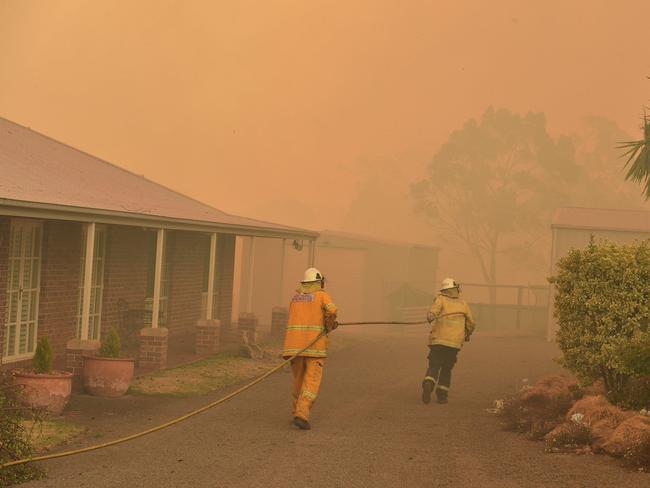
■ checking your water supply – check pumps and water supplies are available and in working order – check that hoses and hose reels are not perished, and fittings are tight and in good order – test drenching or spray systems.
■ removing combustible materials – clear leaf litter and debris from the roof and gutters – trim trees and other vegetation in the vicinity of the house – move woodpiles and other combustible materials well away from the house – check mats are of non-combustible material or in areas of low potential exposure – check driveways are in good condition with vegetation not too close to the edge of the roadway.
Source: Yourhome.gov.au
What is the most bushfire prone area in Australia?
Weather systems work differently across Australia’s temperate and tropical regions.
Severe bushfire conditions are influenced by a combination of these systems, but in most cases by hot, dry winds blowing from central Australia.
The dry summer months are the danger time for southern Australia, while northern Australia is at risk during winter.
Source: Bureau of Meteorology
What are the current fire apps in Australia?
The Fires Near Me Australia app is listed as a comprehensive tool for staying aware of bush fire threats across the nation using information sourced directly from fire and emergency services.
The Qld Fires app is designed to provide information on current fires within Queensland.
The information is displayed in a list or map view to enable the user to understand how far the fire is from a user.
You can download the Qld fires app here.

What should be in a fire escape kit?
According to the NSW Rural Fire Service you should include:
■ Portable battery-operated radio
■ Waterproof torch
■ Spare batteries
■ First aid kit with manual
■ Candles with waterproof matches
■ Woollen blankets
■ Emergency contact numbers
■ Waterproof bag for valuables
More info here.
What is the best protective clothing for bushfires?
According to the NSW Rural Fire Service: “Loose fitting clothing made from natural fibres such as pure wool, heavy cotton drill or denim is important to protect you from injury. Synthetic fabrics can melt or burn. A hat can stop embers from dropping onto your head or down the back of your shirt.”
What are the warning signs of a bushfire?
Weather conditions influence the size, intensity, speed, and predictability of bushfires and how dangerous they can be to the community.
Vegetation growth can be encouraged by periods of wet weather, increasing the amount of fuel available (grass, leaf litter, twigs, bark). When the weather is hot, the humidity is low and there’s been little recent rain, this vegetation dries out and becomes more flammable.
A fire is more likely to start, and continue to burn, in hot, dry and windy weather.
Source: Bureau of Meteorology
When should I leave home if a bushfire breaks out near me?
Everyone who lives near bushland should prepare a bushfire survival plan before the fire season.
Those with an existing plan should review it and ensure it is still suitable for your current situation.
The plan should take into account your surroundings (whether you live in bushland, near the coast, on a farm, and so on), and your own ability to cope with the stress of fire situations.
Remember, leaving a high-risk bushfire location is the safest action, and leaving before a bushfire threatens is always safer than remaining until a bushfire starts.
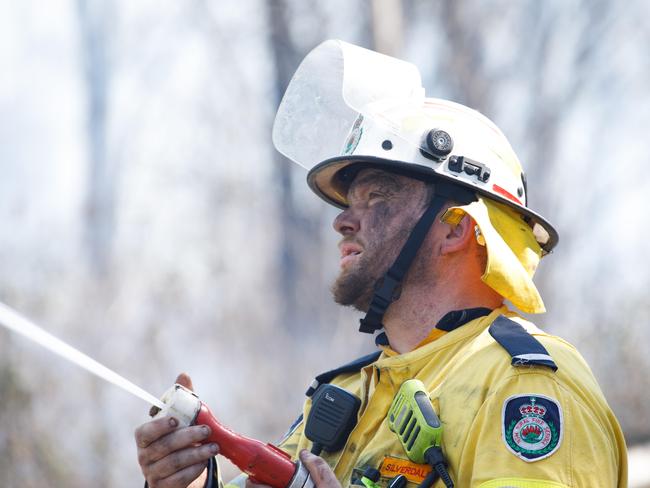
Leaving becomes increasingly appropriate with higher Fire Danger Ratings. Work out your safest exit route before the fire season.
Bushfires are unpredictable and plans can fail. A contingency plan that identifies your alternate options may save your life if you are caught in a fire. You need to consider:
■ What will you do if you are away from home (work, school, shopping)?
■ What if your pet is scared and you cannot find them?
■ What if you are home alone?
■ What if you have guests staying with you?
■ What will you do if your travel route is cut off?
■ What will you do if you are trapped in your home?
■ Where will you go if you had planned to stay but it is now unsafe and you need to leave?
Sources: Yourhome.gov.au, Queensland Fire and Emergency Services
What do I do if I get caught in a bushfire?
According to the Bushfire Safety Guide, discuss with your family if you are capable and prepared to stay and defend your home or if leaving is the best choice for your family.
You need to consider:
■ Your health. Fire conditions may aggravate conditions, such as breathing conditions that may make it difficult to defend your property for an extended period of time.
■ Your physical abilities. You may need to defend your home for several hours in extreme heat and smoke which may require intense physical activity.
■ Your mobility. You will need to move around your property with ease, potentially in dark, windy, and noisy conditions.
■ Your mental health. The impact of bushfire can be traumatic and you will need to be mentally prepared.
■ Your ability to make critical and informed decisions under stressful conditions.
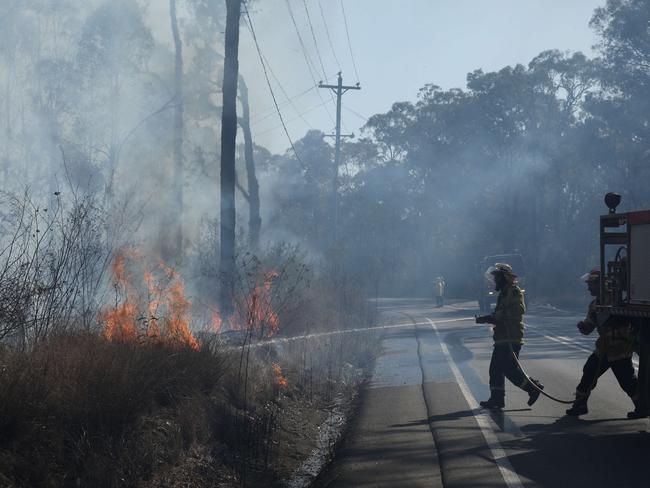
Where do you hide in a bushfire?
Remain in your home while the fire front is passing, and shelter in a room furthest from the fire front.
Make sure the room has at least two ways to get outside, and has a water supply. People have died sheltering in rooms without a second exit door.
Source: Department of Fire and Emergency Services
What do I do if I’m inside during a bushfire?
Before the fire arrives:
■ Alert family and neighbours.
■ Bring pets inside.
■ Dress in protective clothing.
■ Shut all doors and windows.
■ Fill bath, sinks and buckets with water.
■ Place wet towels in any crevices, such as gaps under doors.
■ Take curtains down and push furniture away from windows.
■ Place ladder in ceiling access ready to inspect ceiling cavity.
Then during the fire:
■ Retreat inside your home.
■ Bring buckets, hoses, mops and tap fittings inside with you.
■ Patrol inside for spot fires and extinguish.
■ Check the ceiling cavity.
■ Drink plenty of water.
■ Reassure family and pets.
■ Make sure you are situated in a room with two exits.
Source: Government of South Australia
How do I contact fire and emergency services?
Across Australia for emergencies call Triple Zero (000). (TTY: 106)
In Queensland for non-emergencies call 13 QGOV (13 74 68), or internationally +61 7 3328 4811 (+10 hours UTC).
More info here.
In NSW contact the Bush Fire Information Line on 1800 679 737.
In Victoria contact Triple 000.
In South Australia call the Country Fire Service (CFS) Bushfire Information Hotline on 1800 362 361 or TTY (teletypewriter or textphone) on 13 16 77 for information on: fire danger ratings.
In Western Australia call 132 500.
In Tasmania get further information here.
In the Northern Territory call 08 8999 3473 in non-emergencies.
How do I keep my pets safe during a bushfire?
Remember your fire escape kit.
Your Pet Bushfire Relocation Kit should include:
■ Food and water
■ A bowl for each pet
■ A second collar and lead
■ A carrier for cats and smaller pets
■ Bedding and a woollen blanket
■ A pet first-aid kit – seek your vet’s advice
■ A favourite toy
■ Any medications, along with a written list of what they are
■ Your pet’s medical history, including proof of vaccination
■ Your vet’s contact details
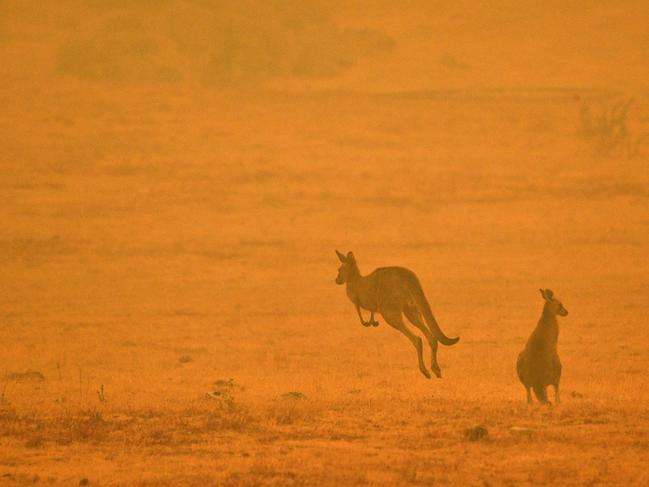
How do you keep livestock safe during a bushfire?
For livestock, the RSPCA reccomends:
“Preparing a safe paddock for your livestock before the bushfire season begins. Make sure your paddock has an adequate supply of water that is not reliant on electric pumps.
A safe paddock should be large enough for livestock to move freely, have easy access for vehicles and should be well fenced.
To minimise the risk of fire damage, the safe paddock should be either irrigated to keep moisture in the ground or hard-grazed to reduce the fuel load.
It’s also important to ensure the area is not surrounded by combustible material like thick vegetation or hay stacks.”
Source: Country Fire Authority
Can you have a small fire pit in your backyard?
According to the Queensland Fire and Emergency Services: Where possible, the fire should be lit in a properly constructed barbecue or fire pit, preferably surrounded by large rocks, constructed to prevent the escape of fire or burning materials. The fire must be smaller than two metres in all directions. Any larger fires require a permit to light fire.
More info here.
What was the worst bushfire in Australian history?
According to Australian Geographic the deadliest bushfires on record, ranked by number of fatalities, are:
1. Black Summer, July 2019 – March 2020
Smoke from the fires was responsible for 450 deaths, while 26 fatalities were directly caused by the fires.
2. Black Saturday (VIC), 7-8 Feb 2009
Record-high temperatures and strong winds after a season of intense drought set the bush alight across the state, causing widespread devastation, 173 fatalities and the destruction of more than 2000 homes.
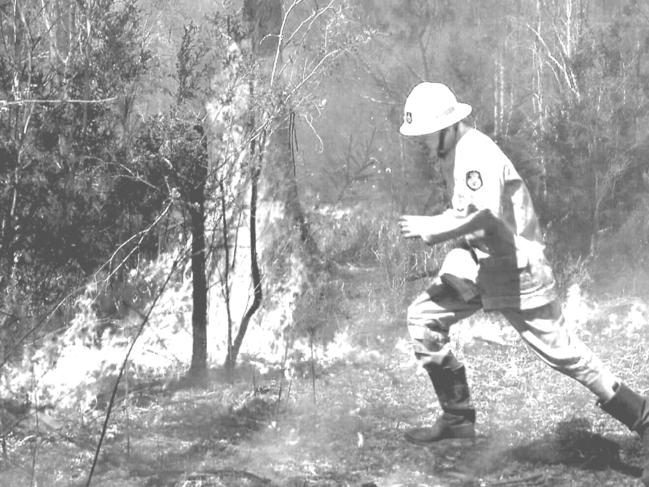
3. Ash Wednesday (VIC, SA), 16-18 Feb 1983
Accidents and arsonists started most of the fires, which spread rapidly through scenic residential regions near Melbourne and Adelaide, resulting in the death of 75 people and the destruction of nearly 1900 homes.
4. Black Friday (VIC), 13-20 Jan 1939
In all, 71 people were killed and 650 houses were destroyed. A Royal Commission investigation into the fires led to increased fire awareness and prevention efforts throughout Australia.
5. Black Tuesday (TAS), 7 Feb 1967
Strong northerly winds and high temperatures coupled to help fuel at least 80 different fires across southern Tasmania, which swept over the south-east coast of the state and came within 2km of central Hobart. The fires killed 62 people and razed almost 1300 homes.

